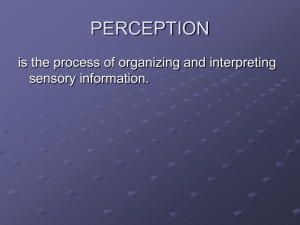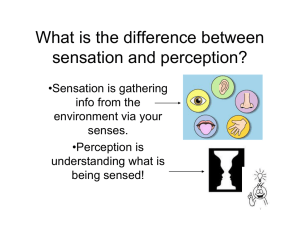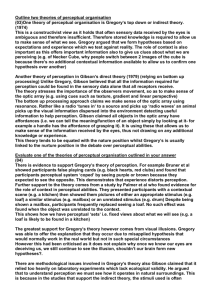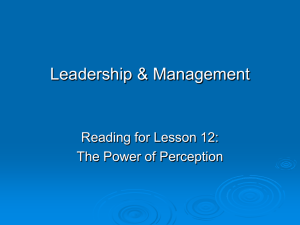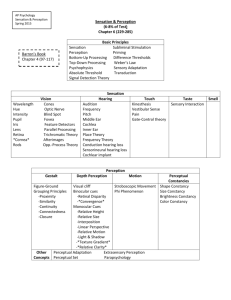Student Answer
advertisement
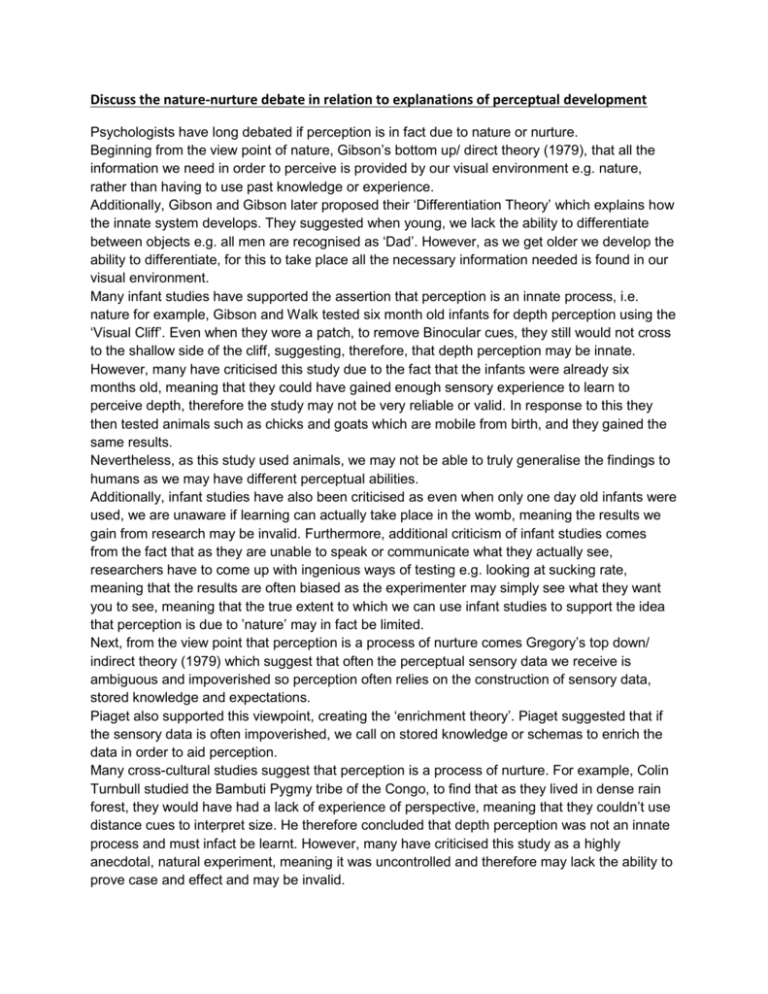
Discuss the nature-nurture debate in relation to explanations of perceptual development Psychologists have long debated if perception is in fact due to nature or nurture. Beginning from the view point of nature, Gibson’s bottom up/ direct theory (1979), that all the information we need in order to perceive is provided by our visual environment e.g. nature, rather than having to use past knowledge or experience. Additionally, Gibson and Gibson later proposed their ‘Differentiation Theory’ which explains how the innate system develops. They suggested when young, we lack the ability to differentiate between objects e.g. all men are recognised as ‘Dad’. However, as we get older we develop the ability to differentiate, for this to take place all the necessary information needed is found in our visual environment. Many infant studies have supported the assertion that perception is an innate process, i.e. nature for example, Gibson and Walk tested six month old infants for depth perception using the ‘Visual Cliff’. Even when they wore a patch, to remove Binocular cues, they still would not cross to the shallow side of the cliff, suggesting, therefore, that depth perception may be innate. However, many have criticised this study due to the fact that the infants were already six months old, meaning that they could have gained enough sensory experience to learn to perceive depth, therefore the study may not be very reliable or valid. In response to this they then tested animals such as chicks and goats which are mobile from birth, and they gained the same results. Nevertheless, as this study used animals, we may not be able to truly generalise the findings to humans as we may have different perceptual abilities. Additionally, infant studies have also been criticised as even when only one day old infants were used, we are unaware if learning can actually take place in the womb, meaning the results we gain from research may be invalid. Furthermore, additional criticism of infant studies comes from the fact that as they are unable to speak or communicate what they actually see, researchers have to come up with ingenious ways of testing e.g. looking at sucking rate, meaning that the results are often biased as the experimenter may simply see what they want you to see, meaning that the true extent to which we can use infant studies to support the idea that perception is due to ’nature’ may in fact be limited. Next, from the view point that perception is a process of nurture comes Gregory’s top down/ indirect theory (1979) which suggest that often the perceptual sensory data we receive is ambiguous and impoverished so perception often relies on the construction of sensory data, stored knowledge and expectations. Piaget also supported this viewpoint, creating the ‘enrichment theory’. Piaget suggested that if the sensory data is often impoverished, we call on stored knowledge or schemas to enrich the data in order to aid perception. Many cross-cultural studies suggest that perception is a process of nurture. For example, Colin Turnbull studied the Bambuti Pygmy tribe of the Congo, to find that as they lived in dense rain forest, they would have had a lack of experience of perspective, meaning that they couldn’t use distance cues to interpret size. He therefore concluded that depth perception was not an innate process and must infact be learnt. However, many have criticised this study as a highly anecdotal, natural experiment, meaning it was uncontrolled and therefore may lack the ability to prove case and effect and may be invalid. Nevertheless, Segall provided further evidence that perception may infact be learnt e.g. nurture. He tested Zulus, Americans and Europeans ability to perceive the Muller Lyer illusion. The results suggested that as the Zulus lived in a rural environment and weren’t used to seeing edges of buildings as they do not live in a carpentered environment they were less fooled by the illusion, possibly highlighting that perception may therefore be learnt and greatly influenced by our environment. Support for Segalls findings came from Stewart who tested people of the same culture from Lusaka and the Zambezi valley and then black people living in Illinois and white people living in Illinois. His results found greater differences in perceiving visual illusions due to the environment, (between Lusaka and Zambezi valley) supporting the idea that perception is a process of nurture. However many cross-cultural studies are criticised as they often used tests which are formulated in our culture, yet then applied and tested in another, causing the problem of imposed etic Therefore, the extent to which we can use cross-cultural studies to support the idea that perception is a process of nurture, may be limited. In addition other psychologists suggest that nature may still play a part in the apparent perceptual differences in different cultures. For example, Pollack suggested high pigmentations in the retina in Africans may account for the fact that they are less likely to be fooled by certain illusions.(e.g. Muller Lyer) Nevertheless, environmental theories are predominantly covered. From evaluating research some seem to support both sides of the debate and may infact seem that perception is actually influenced by both nature and nurture i.e. they are interdependent. For example, Bradmore and Cooper tested kittens who were raised in a perceptually restricted environment for the first five months of their lives to then be released yet their perceptual abilities seemed to be permanently impaired. This could therefore suggest that they were born with innate abilities(nature) yet without enrichment and development from the environment the perceptual systems could not develop. However, the use of such animal studies in the debate have often been criticised, as the findings may not be applicable to Humans as our perceptual abilities may be different Nevertheless, a human case study from Gregory and Wallace of SB supported such findings as SB was born blind due to cataracts. However later in life when they were removed he was never able to make what he saw match his knowledge (schema) meaning that he could never truly perceive. Therefore, to conclude, that research would suggest that although some argue that perception is due to nature, while others argue for nurture, it may infact be that the two factors are interdependent and rely on each other. After all, it would be most adaptive to be born with some ‘hard wired’ systems which can then be pruned and developed to suit our environment. Support for this idea comes from Diamond who studied rats and found that those raised in a perceptually restricted environment had smaller brain development than those raised in an enriched environment, suggesting that while we are born with innate capabilities we need the environment to ensure we develop our abilities to perceive well. Marks 24


